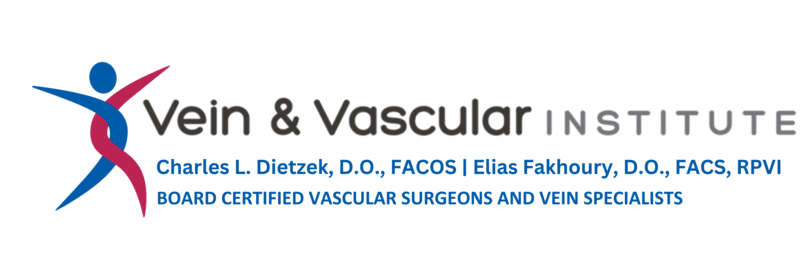Vein Treatment Guide

Sclerotherapy
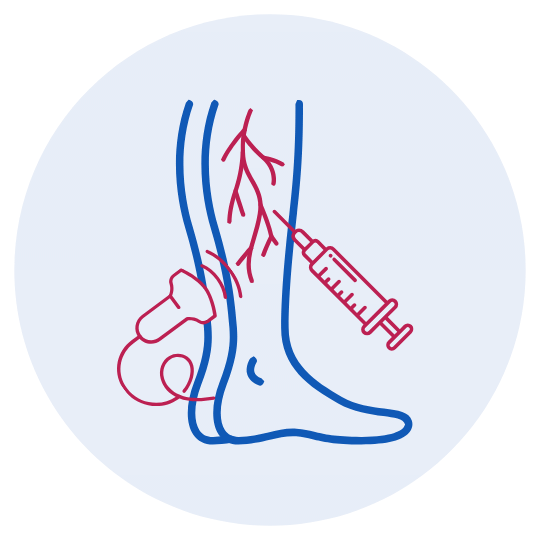
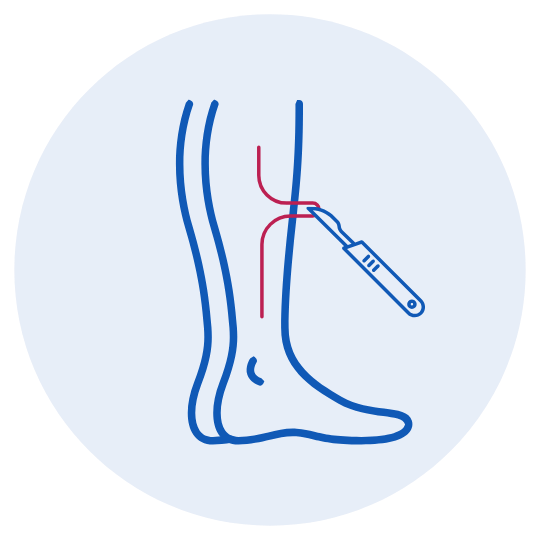
Microphlebectomy
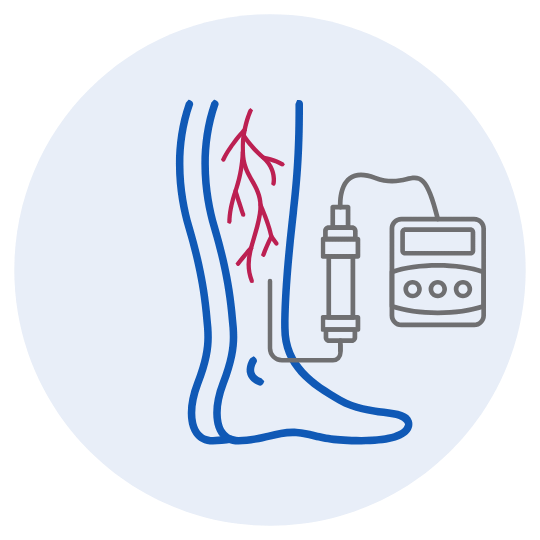
Closurefast
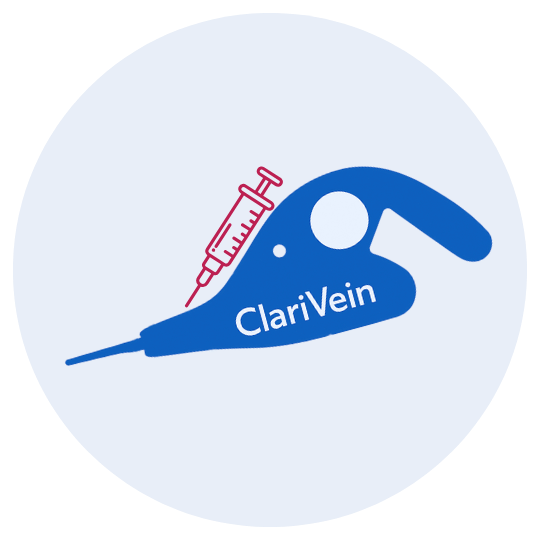
Clarivein
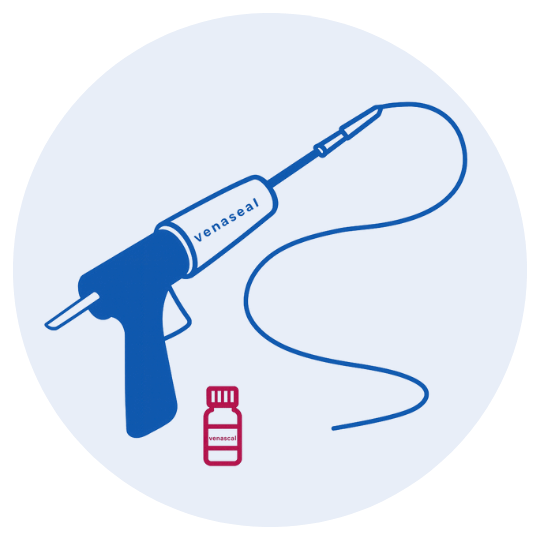
Venaseal
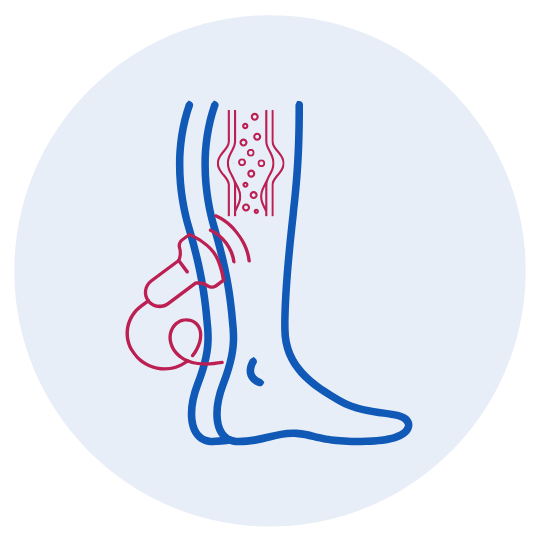
Microfoam
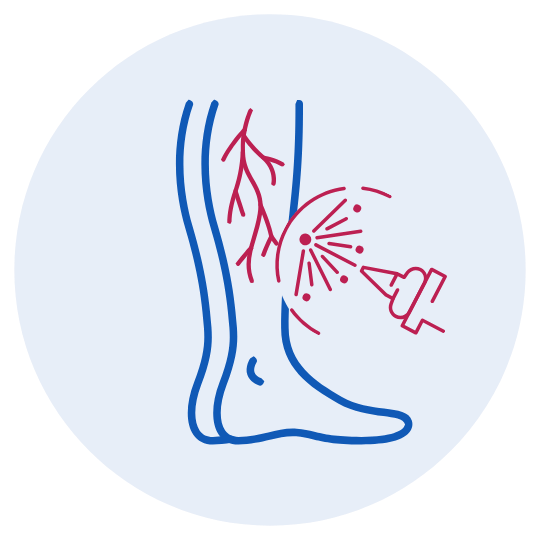
Endovenous Laser Therapy
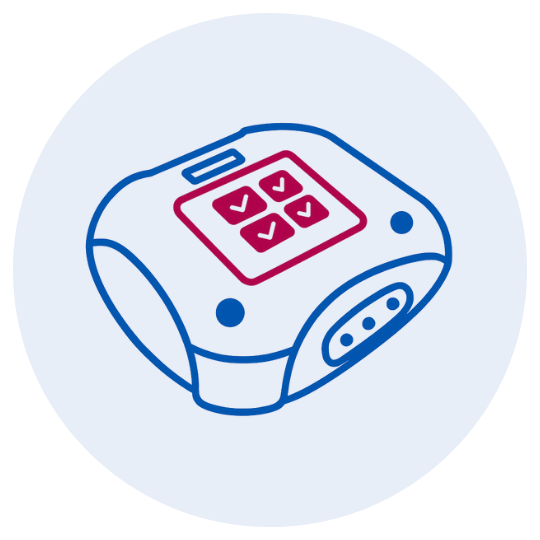
Veingogh
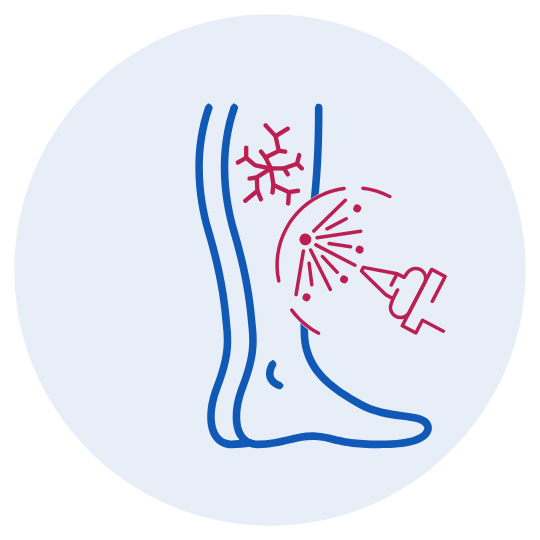
Laser Ablation of Spider Veins
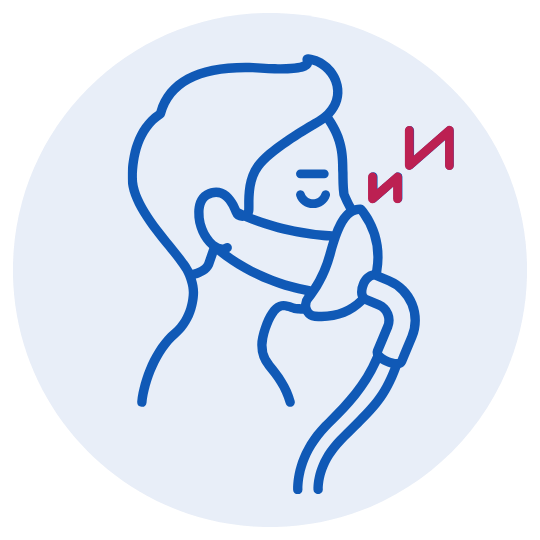
Nitronox Plus
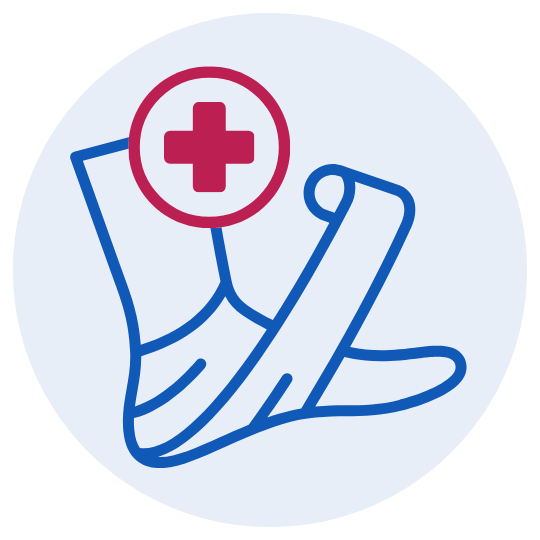
Wound Care
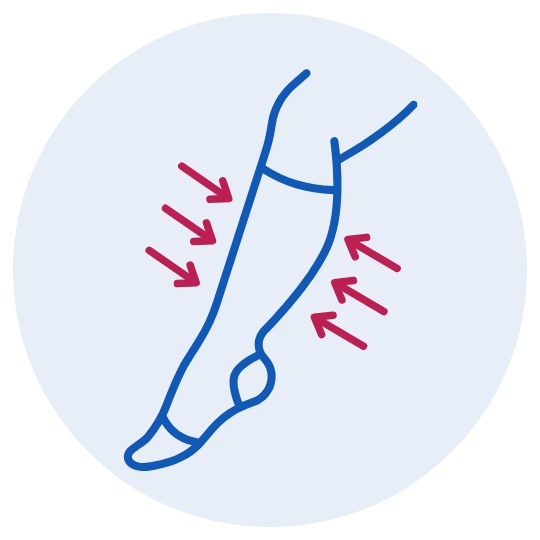
Compression Socks
Visible varicose and spider veins are more than a cosmetic concern—they’re often signs of vein disease. The good news is that treatment is quick, minimally invasive, and covered by most insurance.
Sclerotherapy
Sclerotherapy is the standard treatment for small varicose and spider veins less than 1-2mm in diameter. The legs, ankles, feet, breasts, and hands are the usual treatment locations.
A sclerosing solution is injected into the vein using a fine needle. The vein becomes irritated, collapses, and is gradually absorbed by the body. Since a solution is injected along the length of the vein, a large treatment area can be performed during one session.
The sclerosant placed in the vein causes little to no pain during treatment and is overall tolerated much better than laser therapy. The process causes a gradual fading of the treated vessel over a period of several weeks to several months.
Click here to read an in-depth article on Sclerotherapy authored by Dr. Dietzek.
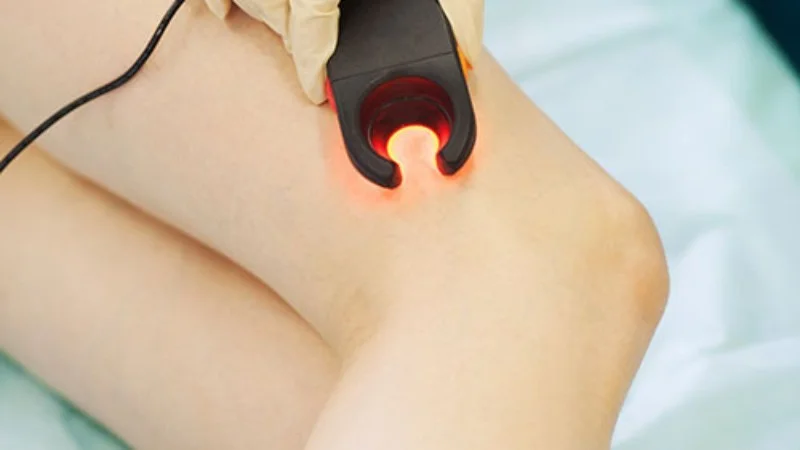
Ultrasound Guided Sclerotherapy
Sclerotherapy performed with the aid of ultrasound imaging aids the doctor in determining where to place the needle as well as assessing the number of injections that will be necessary.
The procedure begins with the patient lying on the examination table as a water-based gel is applied to the area on their body that will be observed. The transducer is kept firmly against the skin and is moved back and forth across the area to allow for the most detailed observation possible. Once the treatment site has been identified, the affected veins are injected with a sclerosant solution, which causes the veins to eventually collapse and be absorbed into the bloodstream.
After the sclerotherapy procedure, cotton balls and compression tape are applied to the injection site. Patients usually report only a mild burning sensation during the treatment.
Microphlebectomy
Microphlebectomy is a minimally invasive procedure used to treat varicose veins that are too large to treat with sclerotherapy and too small for laser ablation.
Microphlebectomy is performed under local anesthesia in your doctor’s office. A series of small incisions, 2-3mm, are made after a dilute local anesthesia solution is injected into the area. A fine instrument is inserted through the small opening to grasp the vein. The varicosity is teased from the surrounding tissues and removed. No sutures are needed for the tiny incisions.
An ace wrap and a compression stocking are worn for a few days. Return to normal activities is expected within 24 hours. There are virtually no scars left after this procedure because of the tiny incisions used.
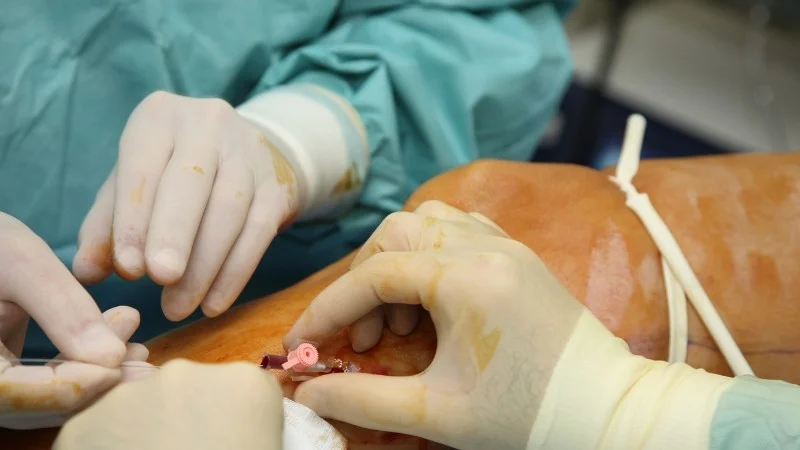

Closurefast™
ClosureFast™ is a minimally invasive alternative to vein stripping for treating symptomatic varicose veins and its common underlying cause, venous reflux. Dr. Dietzek has performed well over five thousand of these procedures. In addition, he was the national course co-director to teach the ClosureFast™ procedure to physicians.
A catheter is placed into a diseased vein under ultrasound guidance through a small opening in the skin. A dilute mixture of lidocaine and saline is injected to numb the leg and protect the surrounding tissue. The catheter delivers heat through radio frequency (RF) energy. This causes the collagen in the vein’s wall to shrink and results in the closure of the vein.
After the procedure, blood is naturally re-routed through other, healthier veins. The procedure’s benefits include faster treatment and recovery time, less discomfort during and after, and little or no scarring, bruising, or swelling. ClosureFast™ is performed under local anesthesia in as little as 20-30 minutes. Typically patients return to their normal activities in less than 24 hours.
Clarivein®
ClariVein®IC is a specialty infusion catheter with a rotating wire tip designed for the controlled 360-degree dispersion of physician-specified agents to the targeted treatment area.
The ClariVein®IC device is a thin catheter (tube) that your doctor temporarily inserts into the peripheral vasculature through a pin-sized entrance point. ClariVein®IC is several times smaller than other devices used in peripheral vascular treatments allowing the entrance point to be smaller.
Another benefit of ClariVein is Use of the it does NOT require painful anesthesia and will not cause thermal agitation.
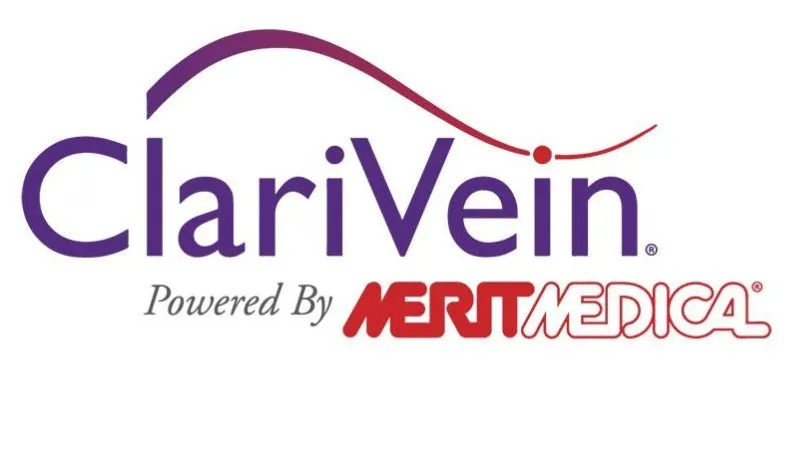
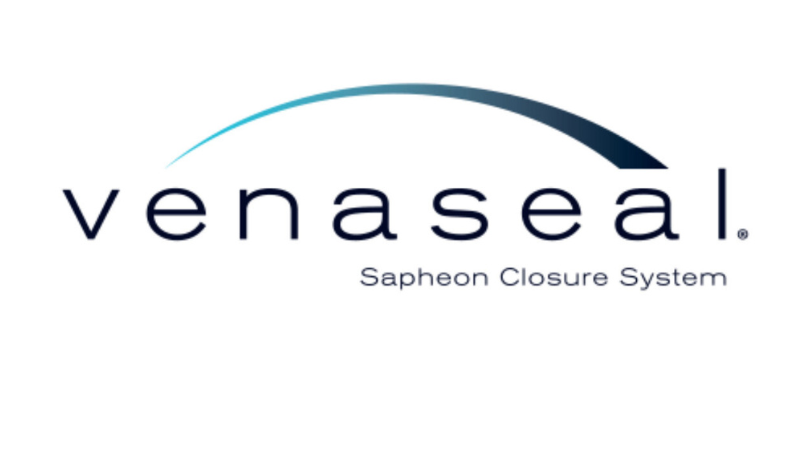
Venaseal™
The VenaSeal™ procedure is the only non-thermal, non-tumescent, non-sclerosant procedure that uses specially formulated medical adhesive delivered endovenously to close the vein. Clinical studies have demonstrated that the procedure is safe and effective.
The procedure is administered without the use of tumescent anesthesia, avoiding patient discomfort associated with multiple needle sticks.
There is minimal to no bruising and no need for post-procedure compression stockings. You can return to your normal activities immediately.
Microfoam
Microfoam injection is a minimally invasive vein treatment for spider veins and varicose veins. This non-invasive, outpatient procedure uses an injectable foam solution.
During the treatment, the doctor will administer a small amount of microfoam. The microfoam fills the desired section of the vein and causes the diseased vein to collapse.
Blood flow is redirected to healthier nearby veins. The microfoam disperses as it comes into contact with blood in healthy veins.

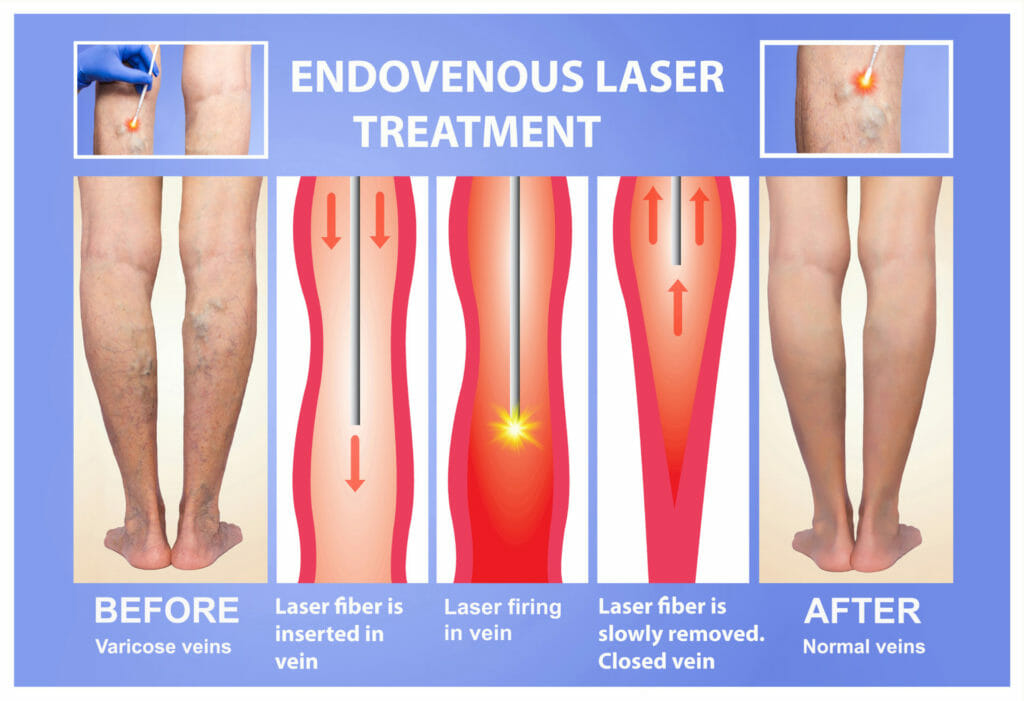
Endovenous Laser Therapy (EVLT)
Endovenous Laser Therapy, or EVLT, is a minimally invasive, groundbreaking procedure used to treat unsightly varicose veins as an alternative to the painful, lengthy ligation and stripping procedure. Up to 98% of patients are satisfied with the results of the ELVT procedure for up to 5 years after. As a result, EVLT is quickly on its way to becoming the new standard for treating varicose veins.
During the EVLT procedure, your doctor will identify the damaged vein and prepare the leg area with an anti-septic ointment. Next, a local anesthetic is applied to the site to minimize any pain. Then, laser light emitted through a thin fiber inserted into the damaged vein delivers just a small amount of energy, causing the malfunctioning vein to close and seal shut. Patients typically report immediate relief from symptoms.
After the EVLT procedure, most patients experience mild bruising and tightness in the legs, although these side effects usually subside within a few days. Patients can return home immediately, and many can resume work and other normal activities the very same day.
VeinGogh
VeinGogh utilizes radiofrequency energy, (the latest rage in medical devices), creating heat similar to laser therapy without its adverse effects on the skin. The desktop device delivers this energy through a pencil like holder device. The veins are traced and there is thermo-coagulation of the spider veins. The vein walls stick together and collapse. The effect of treatment is ‘instant’ – you see the veins disappearing immediately.
The sensation to most is similar to a very fine pin prick, others relate it to a minor sting which does not linger – often it depends upon the location of the treatment. Either way, any discomfort is said to be incomparable to the pain of some laser based treatments and is undoubtedly more effective.
In a few days after treatment, very small micro-crusts can develop which look like a cat scratch. These can appear where VeinGogh has been applied. This is normal and no special care is needed. These will disappear on their own.
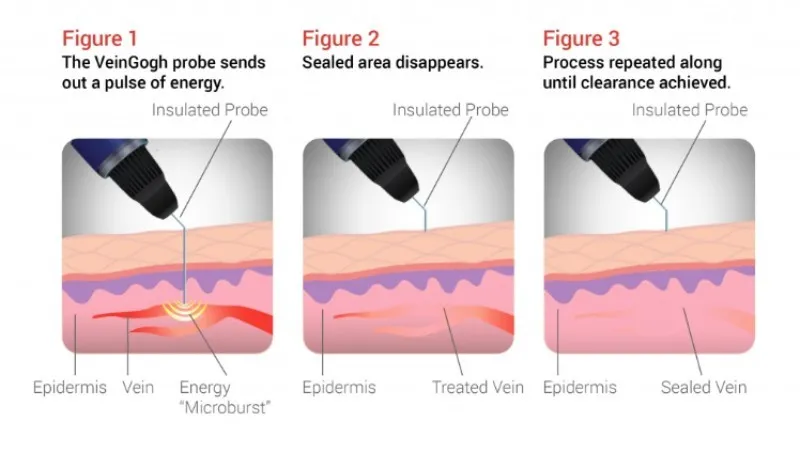
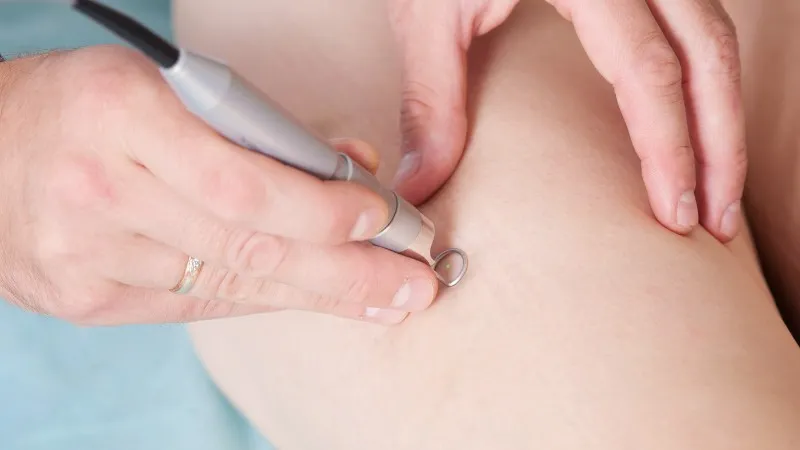
Laser Ablation of Spider Veins
Laser technology allows us to treat spider veins on the face and legs. It is especially good for spider veins on the face and areas of very small and matted spider veins on the legs. The unsightly veins on the face tend to be red skinny lines on the nose and cheeks which respond nicely to lasers. The laser beam can easily be aimed at these tiny spots and achieve good results.
Spider veins are caused by a variety of factors, including heredity, pregnancy and weight gain, and are estimated to affect nearly half of all adult women in the US. Some people experience painful symptoms such as aching, burning, swelling and cramping from spider veins, while others are bothered by their appearance. Treatment for spider veins can be done through traditional sclerotherapy or through more advanced and minimally invasive laser procedures.
There are several different types of laser treatment available, including endovenous laser treatment (EVLT), which treats large veins by passing a laser fiber through a catheter directly into the vein. Veins just under the surface of the skin can be treated with a simpler laser procedure over the course of several treatment sessions. Your doctor will decide which procedure is best for you after performing a physical examination and going over your medical history and general health.
Nitronox Plus®
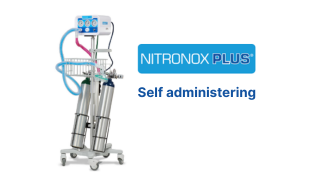
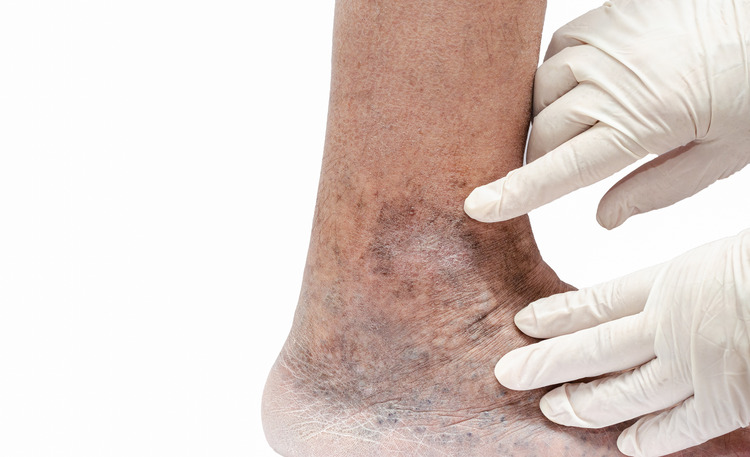
Wound Care
Specialized Wound Care for Venous Stasis Ulcers
Venous stasis ulcers (VSUs) are chronic leg wounds caused by chronic venous insufficiency (CVI)—the same condition behind varicose veins. These painful ulcers often appear near the ankles and heal slowly, accompanied by swelling and skin discoloration. They account for 60–80% of all leg ulcers and affect 1–3% of Americans.
While compression therapy is important, studies show that early treatment of the underlying vein disease greatly improves healing and reduces recurrence.
At Vein & Vascular Institute we go beyond standard care. We offer advanced vein treatments like:
• Perforator vein closures – At our vein clinic, we offer advanced perforator vein ablation — a minimally invasive treatment specifically designed to address poorly functioning perforator veins. These veins connect the superficial and deep venous systems in the legs, and when they fail, they can cause backward blood flow (venous reflux), contributing to chronic symptoms such as leg ulcers and non-healing wounds. Unlike many general wound care providers or even some vein specialists, we go beyond surface-level treatment by targeting the deeper source of the problem. Perforator vein ablation allows us to safely close off these malfunctioning veins, redirecting blood flow to healthier pathways and significantly improving healing and comfort.
• TIRS – “TIRS” stands for Terminal Interruption of the Reflux Source, a technique used in the treatment of venous ulcers, particularly those associated with chronic venous insufficiency. It involves using ultrasound-guided foam sclerotherapy to target and close off specific veins that are contributing to the ulcer’s development and non-healing
Combined with compression therapy, these procedures provide a complete and effective solution.
Get Expert Care That Heals
If you’re dealing with a slow-healing leg ulcer, our team can help. Schedule a consultation at Vein & Vascular Institute to get specialized care that targets the root cause, not just the wound.
Medical Grade Compression Socks
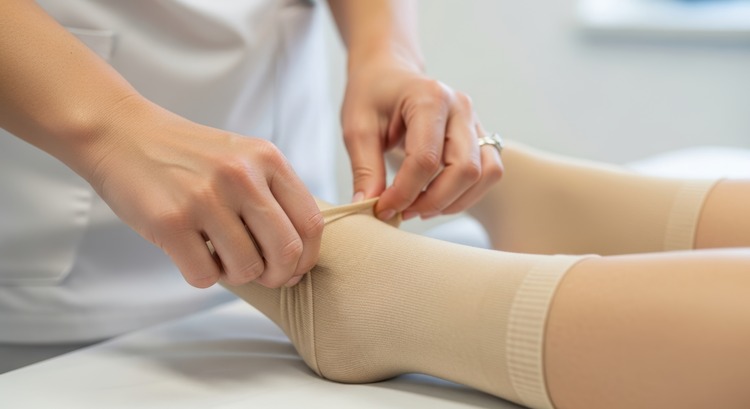
Why Start Vein Treatment Now?
- Untreated vein disease can lead to serious complications like ulcers or blood clots.
- Early treatment not only alleviates discomfort but also prevents further issues.
- Most patients notice a significant improvement within a week!
